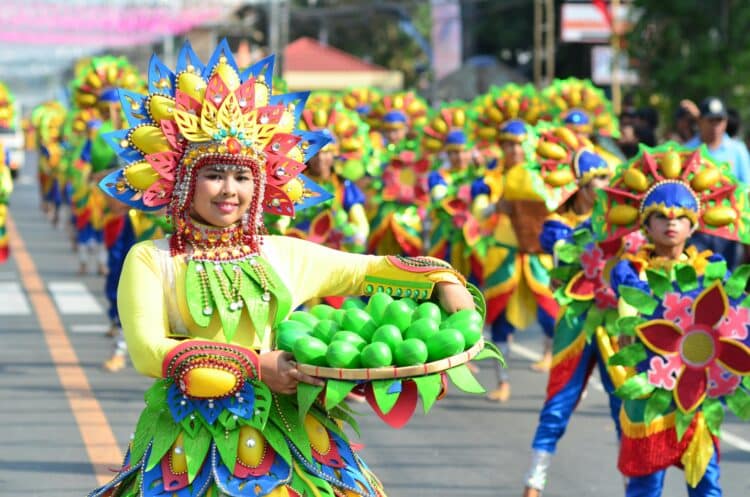Each festival is a vibrant thread in the rich tapestry of Filipino heritage, offering a unique opportunity to witness the nation’s diversity, hospitality, and enduring traditions. From the rhythmic street dances of Sinulog to the artistic body painting of Pintados, these celebrations are more than just events; they are windows into the very essence of Filipino life and identity.
From lively street dances to grand feasts, these festivals offer a glimpse into the Filipino way of life that is sure to leave you captivated.
7 Exciting Fun Festivals Of the Philippines:
1. Pahiyas Festival: A Harvest of Colors
Pahiyas Festival takes place in Lucban, Quezon every May 15th. It’s a joyful celebration of a bountiful harvest.

Houses are adorned with colorful rice, fruits, vegetables, and handicrafts, turning the town into a vivid tapestry.
Locals also create stunning art pieces made of rice, like the famous “kiping,” which are intricately designed leaf-shaped rice wafers. The festival culminates with a procession showcasing these stunning creations.
2. Sinulog Festival: A Dance of Faith
Sinulog Festival in Cebu City is a grand event held every third Sunday of January. It commemorates the Filipino people’s conversion to Christianity and honors the Santo Niño, or the child Jesus.
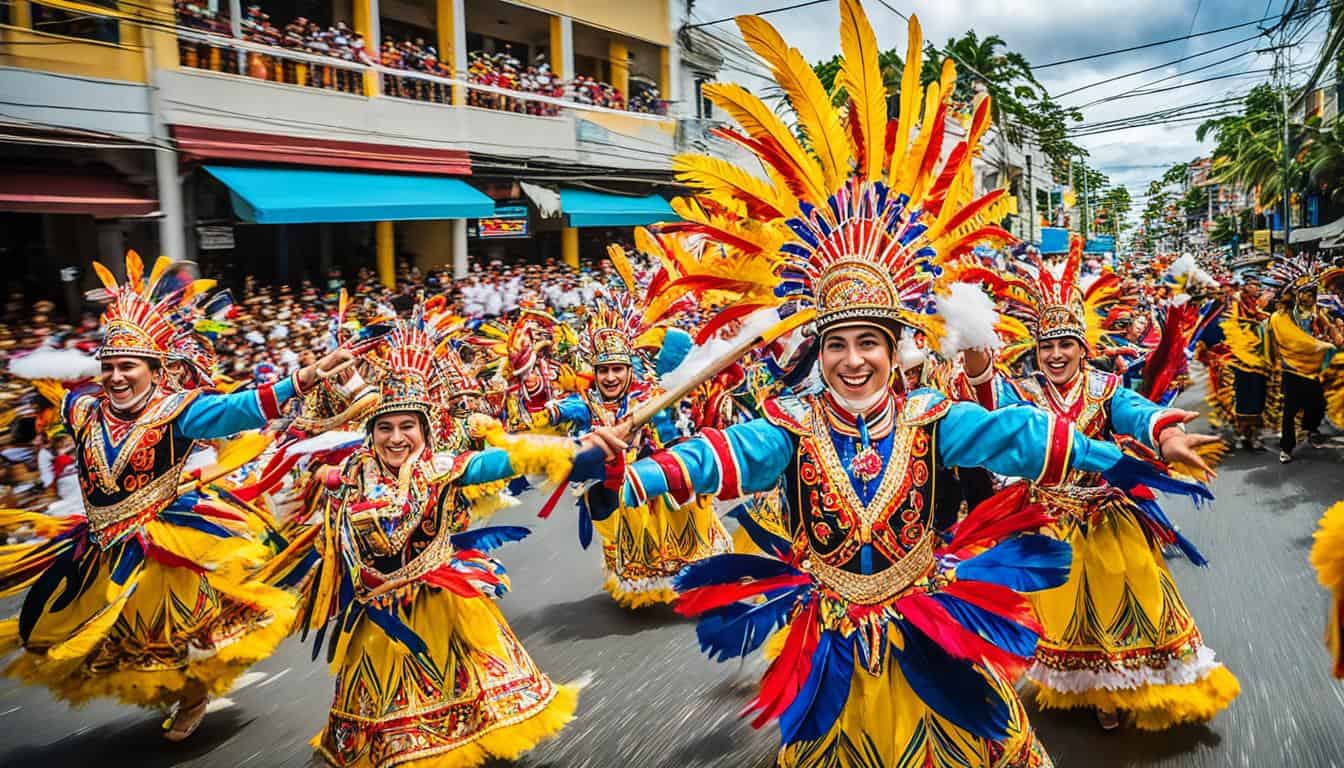
The highlight of the festival is the Sinulog Grand Parade, featuring dancers in vibrant costumes performing to the rhythm of drums and native gongs. It’s a mesmerizing spectacle that combines faith, history, and artistry.
3. Panagbenga Festival: A Blooming Extravaganza
Panagbenga Festival, also known as the Baguio Flower Festival, is celebrated in February in the “Summer Capital of the Philippines,” Baguio City.
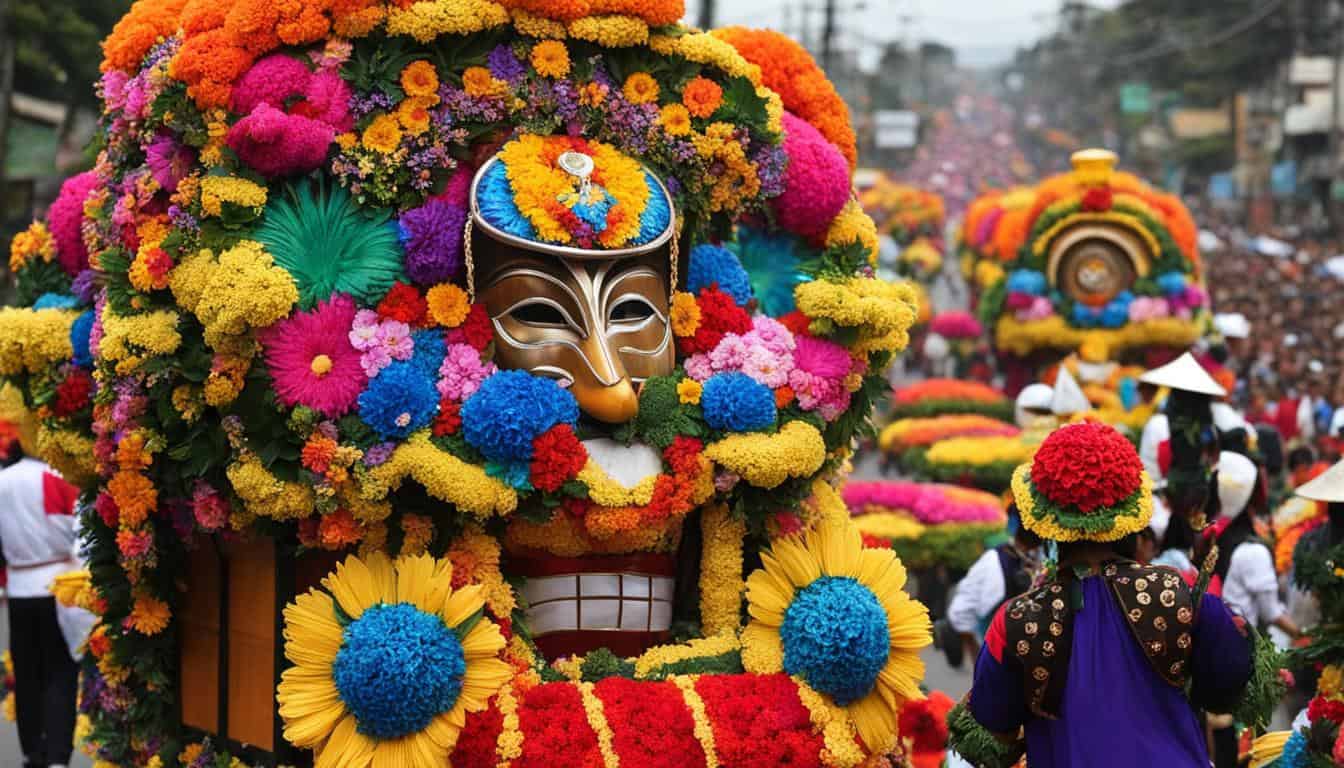
The festival pays homage to the city’s beautiful flowers and cool climate.
The main event is a grand float parade where intricately designed floats adorned with vibrant flowers fill the streets. Visitors can also enjoy street dancing, art exhibits, and food fairs during this month-long celebration.
4. Kadayawan Festival: A Feast of Abundance
The Kadayawan Festival is held in Davao City every August. It’s a week-long celebration of the city’s cultural heritage, bountiful harvest, and appreciation of indigenous people.
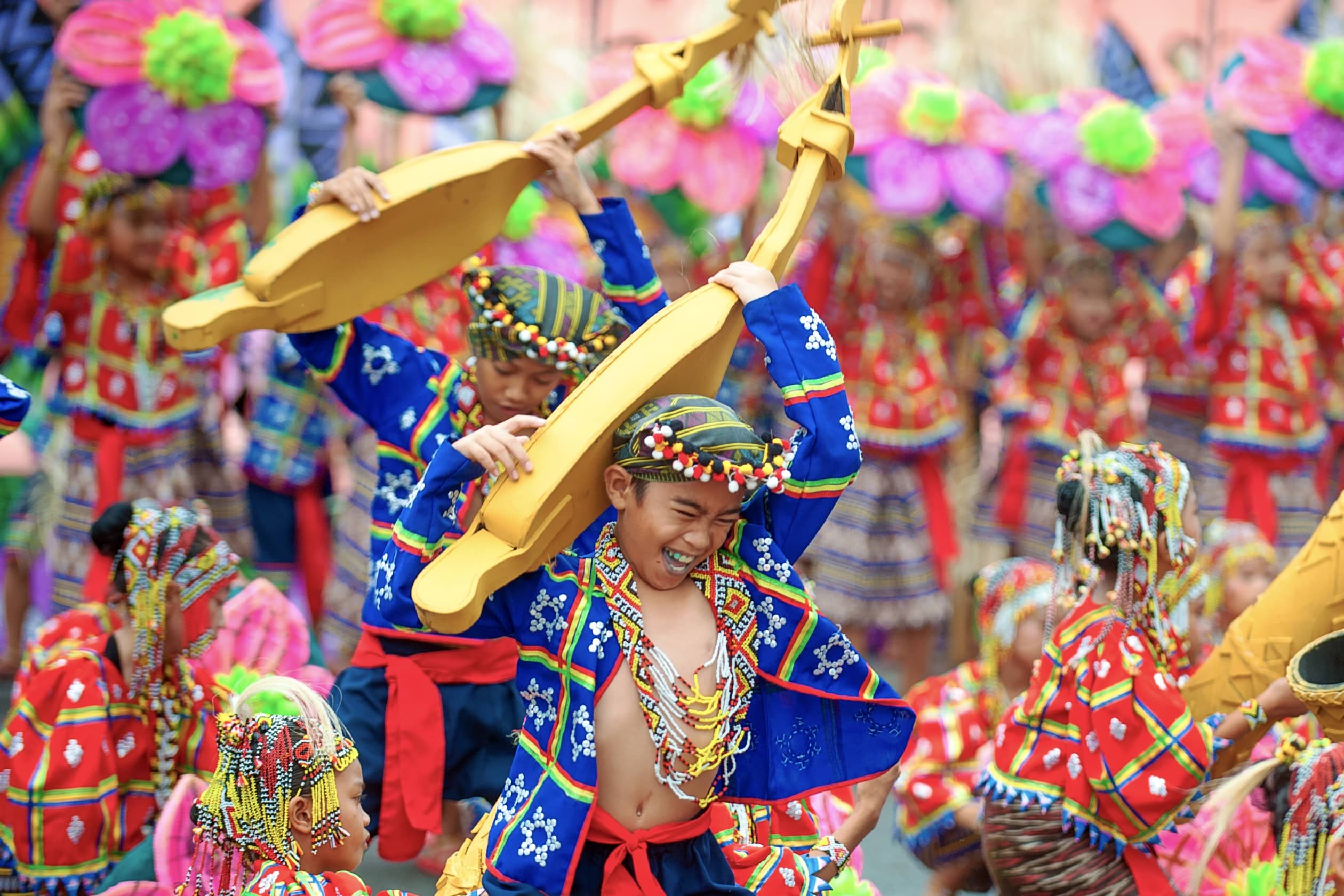
The festival showcases vibrant street parades, traditional music and dance, and a variety of tribal games. It’s also a time when locals express their gratitude for the city’s natural resources and cultural diversity.
5. Ati-Atihan Festival: A Tribute to the Visayans
The Ati-Atihan Festival is celebrated in Kalibo, Aklan, every January. It’s a homage to the island’s indigenous people, the Atis, and their conversion to Christianity.
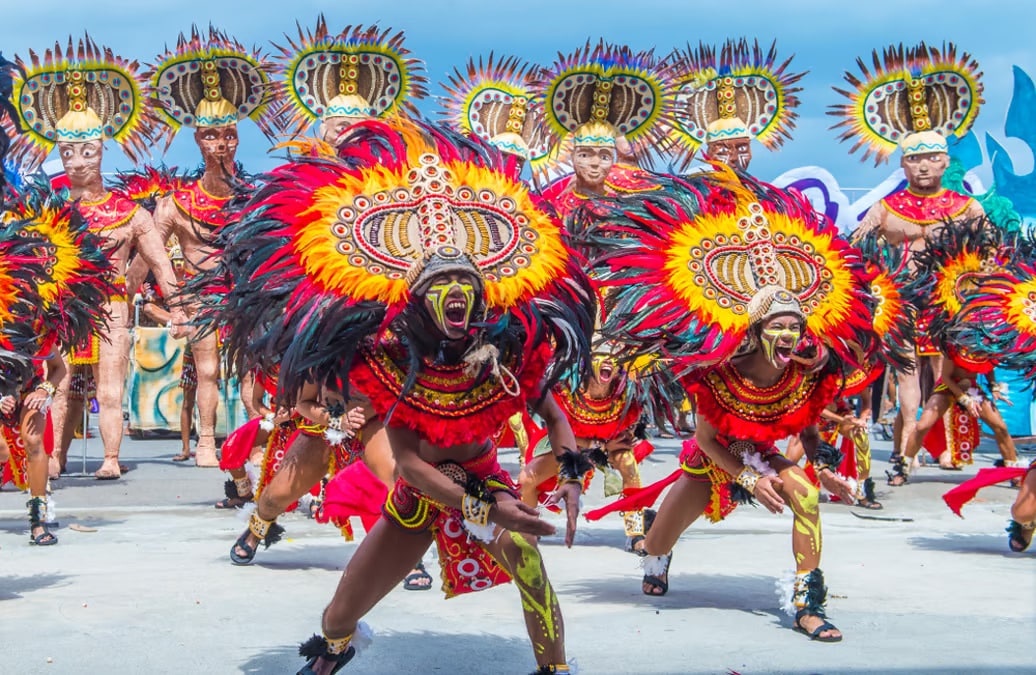
The festival features tribal dance performances, where participants paint their faces with soot to resemble the Atis. The vibrant street parade is a mesmerizing display of culture and devotion.
6. Pintados Festival: A Living Canvas of History
Pintados Festival, celebrated in Tacloban City, Leyte, every June 29th, is a unique celebration of ancient Visayan traditions.
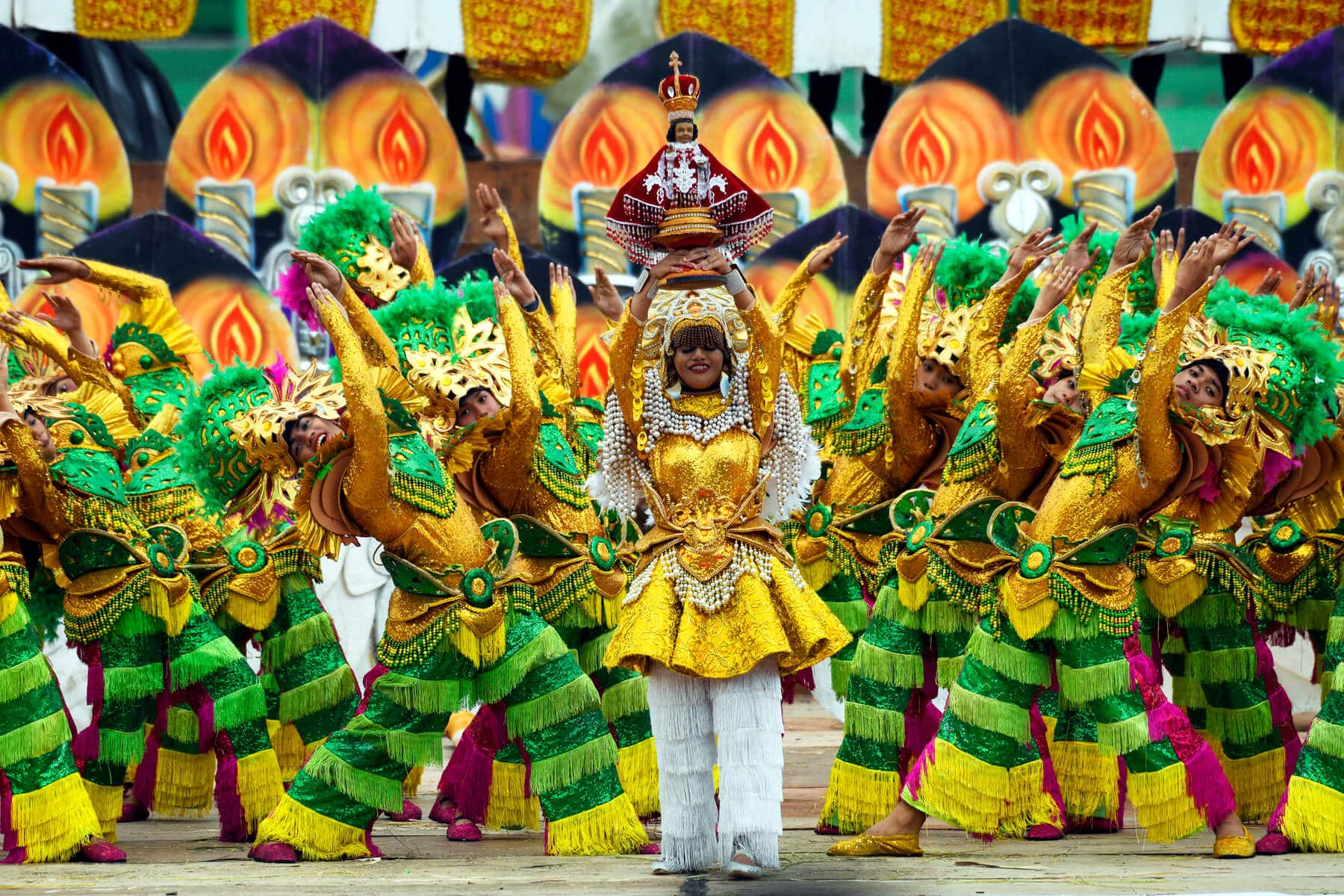
The festival features participants with intricately painted bodies, resembling living canvases. It’s a colorful and artistic representation of the rich history and culture of the Visayan people.
7. Parada ng Lechon: A Roasting Extravaganza
Parada ng Lechon in Balayan, Batangas, is a mouthwatering spectacle that takes place every June 24th. It celebrates the town’s patron saint, John the Baptist, with a grand parade of lechon (roast pig).
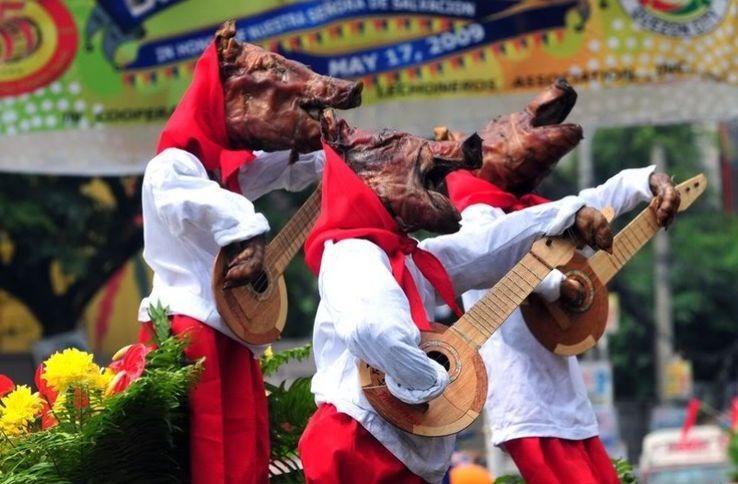
These lechons are dressed in various costumes and are carried through the streets as offerings. It’s a unique fusion of culinary art and religious tradition.
Frequently Asked Questions (FAQs)
Q: What is the significance of the Sinulog Festival in Cebu?
A: Sinulog Festival celebrates the conversion of the Filipino people to Christianity and pays homage to the Santo Niño, or the child Jesus. It is a colorful and lively festival known for its grand parade and street dancing.
Q: When does the Panagbenga Festival take place?
A: The Panagbenga Festival, also known as the Baguio Flower Festival, is celebrated in February in Baguio City, known as the “Summer Capital of the Philippines.” It’s a month-long celebration featuring a grand float parade and various cultural events.
Q: What is the main highlight of the Kadayawan Festival in Davao City?
A: The main highlight of the Kadayawan Festival is its vibrant street parades, traditional music and dance performances, and a variety of tribal games. It’s a week-long celebration of cultural diversity and gratitude for the city’s natural resources.
Q: Why do participants in the Ati-Atihan Festival paint their faces with soot?
A: Participants in the Ati-Atihan Festival paint their faces with soot to resemble the Atis, the indigenous people of the region. It’s a way to pay homage to the island’s heritage and the Atis’ conversion to Christianity.
Q: What is the unique aspect of the Pintados Festival in Tacloban City?
A: The unique aspect of the Pintados Festival is the participants’ intricately painted bodies, resembling living canvases. It’s a colorful representation of Visayan history and culture.
Q: When does the Parada ng Lechon take place, and what is its main attraction?
A: Parada ng Lechon is celebrated every June 24th in Balayan, Batangas. Its main attraction is the grand parade of lechon (roast pig) dressed in various costumes. It’s a unique fusion of culinary art and religious tradition.
Conclusion
The “7 Fun Festivals Of Philippines” offers a delightful journey through the heart of this beautiful archipelago. From vibrant parades to culinary extravaganzas, these festivals are a testament to the Filipino spirit, culture, and traditions. As you explore these celebrations, you’ll not only witness the diversity of the Philippines but also be welcomed with warm smiles and open arms. So, immerse yourself in the festivities, savor the flavors, and embrace the rich cultural tapestry of the Philippines.
As you explore these festivities, you not only witness the diversity of the Philippines but also become part of it. You’ll hear the laughter of the locals, savor the flavors of Filipino cuisine, and dance to the rhythmic beats of traditional music. But most importantly, you’ll experience the warm hospitality and open hearts of the Filipino people, who welcome visitors as part of their extended family.
So, as you depart from these festivals, carry with you the memories of the Philippines—a place where culture is celebrated, traditions are cherished, and the spirit of unity prevails. Whether you’re a traveler seeking adventure or a culture enthusiast yearning to connect with the world, the “7 Fun Festivals Of Philippines” are an unforgettable chapter in your journey through this beautiful nation.
ALSO READ: 10 Benefits Of Travelling Solo
5 Breathtaking Natural Wonders In Europe: Nature’s Grandeur Unveiled


